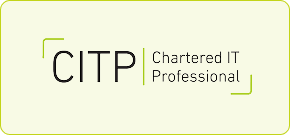The buyer’s view
Over the course of this year we’ve asked a number of customers and suppliers what they think of the traditional request for proposals (RFP). The RFP was not particularly popular with the buyers we interviewed. They generally viewed tenders as a bureaucratic process that takes far too long - an unavoidable, lengthy exercise sometimes imposed by their purchasing departments. And is the effort always worth it? One issue is that where many authors collaborate to write a tender, the list of questions grows and grows, ending up as Frankenstein’s monster!
The best part of the process, according to the IT people we spoke to, is the stage where they actually get to meet the vendors. That is where the project starts to get interesting.
Is a formal tender worth the effort? Or is there a better way?
What suppliers think of the RFP
Speaking candidly, the suppliers we talked to confirmed what we know - it’s major effort for them to prepare a bid response. And if they feel a customer already has a favourite vendor in mind, but their decision needs to be ratified by a formal tender, they may no-bid the exercise.
Suppliers commented that much of the content requested is boiler-plate copy that would result in a cut-and-paste job at their end.
Savvy suppliers gain a knack of reading RFPs and judging how good their chances are. Some use algorithms to calculate their probability of a win, including factors such as their track record with you or your sector. In around 20% to 30% of cases, they decide not to bid at all. With a tender response requiring so much effort, you can understand their position.
The agile alternative
The alternative to the RFP is agile sourcing, which could be the way forward for many go-to-market exercises. It avoids many of the pitfalls with a traditional tender process. One main concept of agile sourcing is to create around ten key business scenarios, to outline what the system or service should do. The precise formatting and content are critical, as they are used later as a live scorecard. A long list of suppliers is then invited to present their solutions to these scenarios, for objective scoring in a live demonstration.
On the suppliers’ side, sales people quite like this approach, as it means they get to meet the prospective customer sooner, and they spend more time in dialogue, rather than working on long written responses.
Advantages of agile
Agile sourcing focuses the procurement on the most common requirements and the top priorities, rather than covering every detail and exception as can happen in a detailed tender requirement.
Agile sourcing gets the process started faster as there is less to prepare, and writing the scenarios is far easier for business staff than preparing formal RFP’s with detailed specifications. As a team, with agile sourcing, you get to meet the suppliers much sooner, and you soon get a personal feel for what they can deliver and what is possible.
The first series of meetings will reveal the stronger bidders and the short list is compiled from these. Then the more detailed supplier evaluations and due diligence follow, but only for the shortlisted companies. This cuts out much of the effort of evaluating tender responses from a larger number of bidders.
From your team’s point of view, agile sourcing is more enjoyable. They see a series of live demonstrations of “how things might be” which is far more useful and helpful - and just not the same as evaluating a pile of tender documents. It also gets the project off to a flying start, as it is so much easier to ask your team to formulate a series of one-page scenario documents than to prepare a full-scale specification for tenders.
There is no doubt that the vendor community prefer to work this way too. They are more likely to agree to bid - so this reduces the number of ‘no-bids’ that you may get with an RFP.
Take care
There are some provisos. agile sourcing is not a perfect process either, and it brings obligations. First, the individuals in the scoring team must be consistent for each supplier presentation, and each person should commit to attend every meeting.
With agile sourcing, the shortlisting is based on the functional aspects only. The technical and commercial evaluations follow in the next phase. You should consider if this is likely to cause an issue - what will happen if all the shortlisted companies were to fail the commercial and technical requirements in the second phase?
Take care with drafting the scenario documents. Both the format and content of them, along with the supporting ‘rules of the game’ documentation are key to ensure your process works. It is easy to get confused in this space - the web contains so much misleading content about agile software development, use cases, epics and other similar buzz words.
If regulatory compliance is a key criterion for choosing a vendor, this can be included early on in the process, either at the bidder pre-qual stage, or factored into a scenario, to be sure that only qualifying companies are included. This is one angle of how agile sourcing can work in a public procurement setting, and remain compliant.
Costs are often a key factor in a final decision making. With agile sourcing, suppliers can present their Rough order of Magnitude (RoM) costs, which should not be viewed as binding.
When to go agile?
Organisations explore agile sourcing for a number of reasons: if there isn’t time or the will for a full RFP exercise; to avoid sitting through unstructured vendor demo’s and ending up with incomparable bids or choosing purely on gutfeel and where teams want to try the agile alternative for a change. It has the advantage of educating the team on a new approach. It is ideal for those projects where the solution is difficult to define, perhaps because technology is evolving so fast - and wanting to see what the market can offer.
What types of IT and Telecoms does agile suit?
Agile sourcing fits many IT selection projects - for example new application software, a managed service provider, a systems integration partner, SD-WAN or Secas all suit the process.
Clearly the scenarios will change according to the type of technology being bought, as will the accompanying documents.
We can’t think of many technology selection situations where agile sourcing won’t work.

















